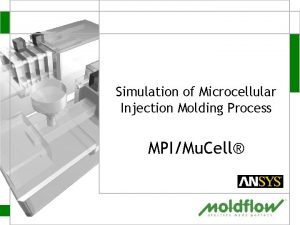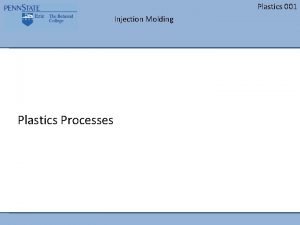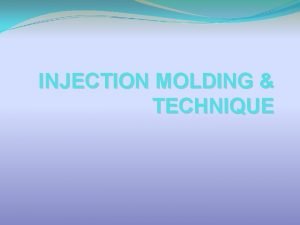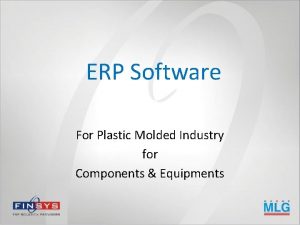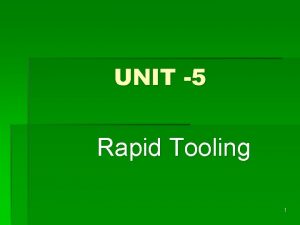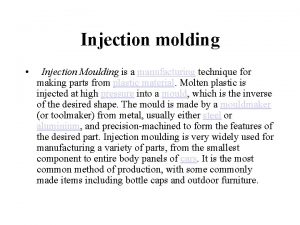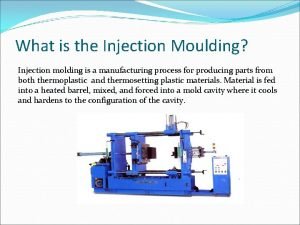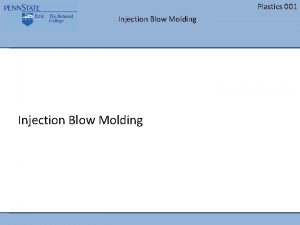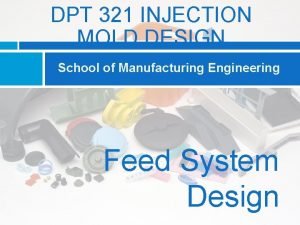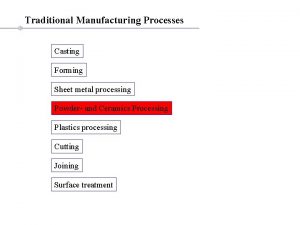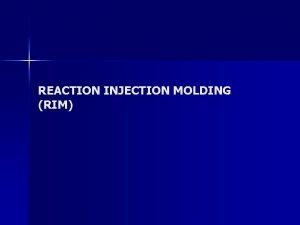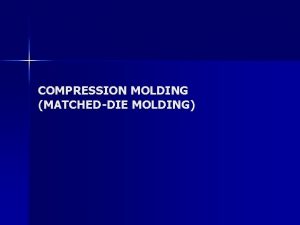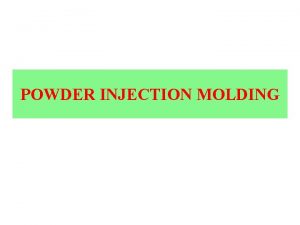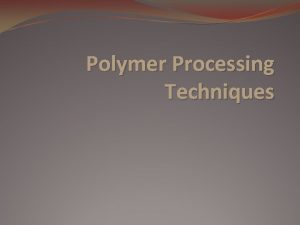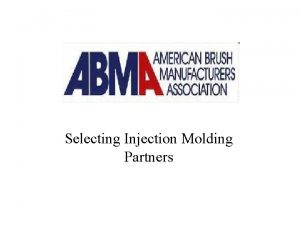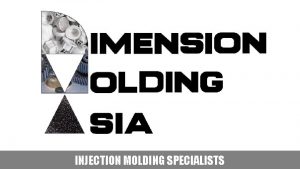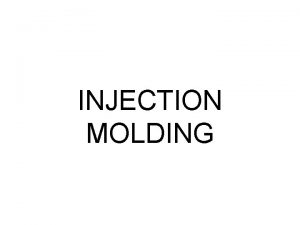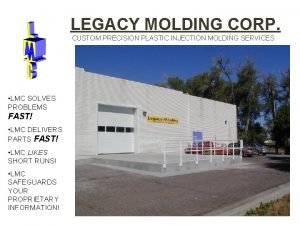Simulation of Microcellular Injection Molding Process MPIMu Cell













- Slides: 13

Simulation of Microcellular Injection Molding Process MPI/Mu. Cell®

Mu. Cell® Injection Molding Process § Mu. Cell is a variation of foam molding § This process is marketed by Trexel Inc. § In this process a Super Critical Fluid (SCF) of Nitrogen (N 2) or Carbon Dioxide (CO 2) is mixed with polymer melt to create a single phase solution which is then injected into the cavity DESIGN SOLUTIONS

Advantages of Mu. Cell § Lighter parts (due to material reduction) § Thin and difficult-to-fill sections can now be filled (due to reduction in material viscosity) § Reduced cycle times § Reduced clamp tonnage § Reduced part warpage DESIGN SOLUTIONS

Basic Mu. Cell Molding Machine Shut-off nozzle Optional air cooled heater bands SCF ports Trexel designed screw and barrel Super Critical Fluid (SCF) Delivery System Minor software and hydraulic changes DESIGN SOLUTIONS Mu. Cell Interface Kit Melt pressure transducer Image courtesy of Trexel Inc.

The Mu. Cell Process 1. Creation of a single phase solution 2. Homogeneous Nucleation 3. Cell Growth 4. Part Formation DESIGN SOLUTIONS Image courtesy of Trexel Inc.

Creation of a Single Phase Solution § The Super Critical Fluid (SCF) or Gas (N 2/CO 2) is injected into the polymer melt during screw rotation thus creating a 2 -phase solution § The SCF bubbles are broken down such that the volume of each bubble is minimized § SCF diffuses into the polymer melt creating a single phase solution DESIGN SOLUTIONS

MPI/Mu. Cell Simulation Features § Evaluate flow front pattern before and after the foaming (nucleation) begins § Establish the volume of plastic and gas mixture (shot size) required to prevent short shot and achieve desired part weight reduction § Determine the initial concentration of supercritical fluid (SCF) in the polymer to prevent short shot and achieve desired cell size DESIGN SOLUTIONS

MPI/Mu. Cell Simulation Features (contd. ) § Predict the cell size variation through the thickness and as a function of time to achieve desired cell size § Predict the cell pressure to ensure it is not too high to cause part warpage § Link to MPI/Cool to evaluate mold cooling with the influence of microcellular foam and minimize cycle time DESIGN SOLUTIONS

MPI/Mu. Cell Simulation Features (contd. ) § Link to MPI/Warp to estimate part shrinkage and warpage due to the influence of cell distribution and cell size § Supported with Midplane & Fusion models § Can be used with any material in the MPI/Synergy material database DESIGN SOLUTIONS

MPI/Mu. Cell Simulation Short shot comparison for gas concentration of 0. 5% (by weight) and shot size of 70% DESIGN SOLUTIONS

Simulation Results Bubble Radius at the end of cycle DESIGN SOLUTIONS

Simulation Results Bubble Radius as a function of time DESIGN SOLUTIONS

Simulation Results Predicted Shape & Magnitude of part deflection DESIGN SOLUTIONS
 Microcellular injection molding
Microcellular injection molding Plastic injection molding indiana
Plastic injection molding indiana Injection molding machine platen
Injection molding machine platen Disk gate injection molding
Disk gate injection molding Erp software for plastic injection molding
Erp software for plastic injection molding Flow mark defect
Flow mark defect Direct aim tooling
Direct aim tooling Injection molding gate blush
Injection molding gate blush Husky plastic injection molding manufacturers
Husky plastic injection molding manufacturers Inurl:injection molding
Inurl:injection molding Advantages of injection stretch blow moulding
Advantages of injection stretch blow moulding Cold slug well
Cold slug well Injection molding
Injection molding Reinforced reaction injection molding
Reinforced reaction injection molding
